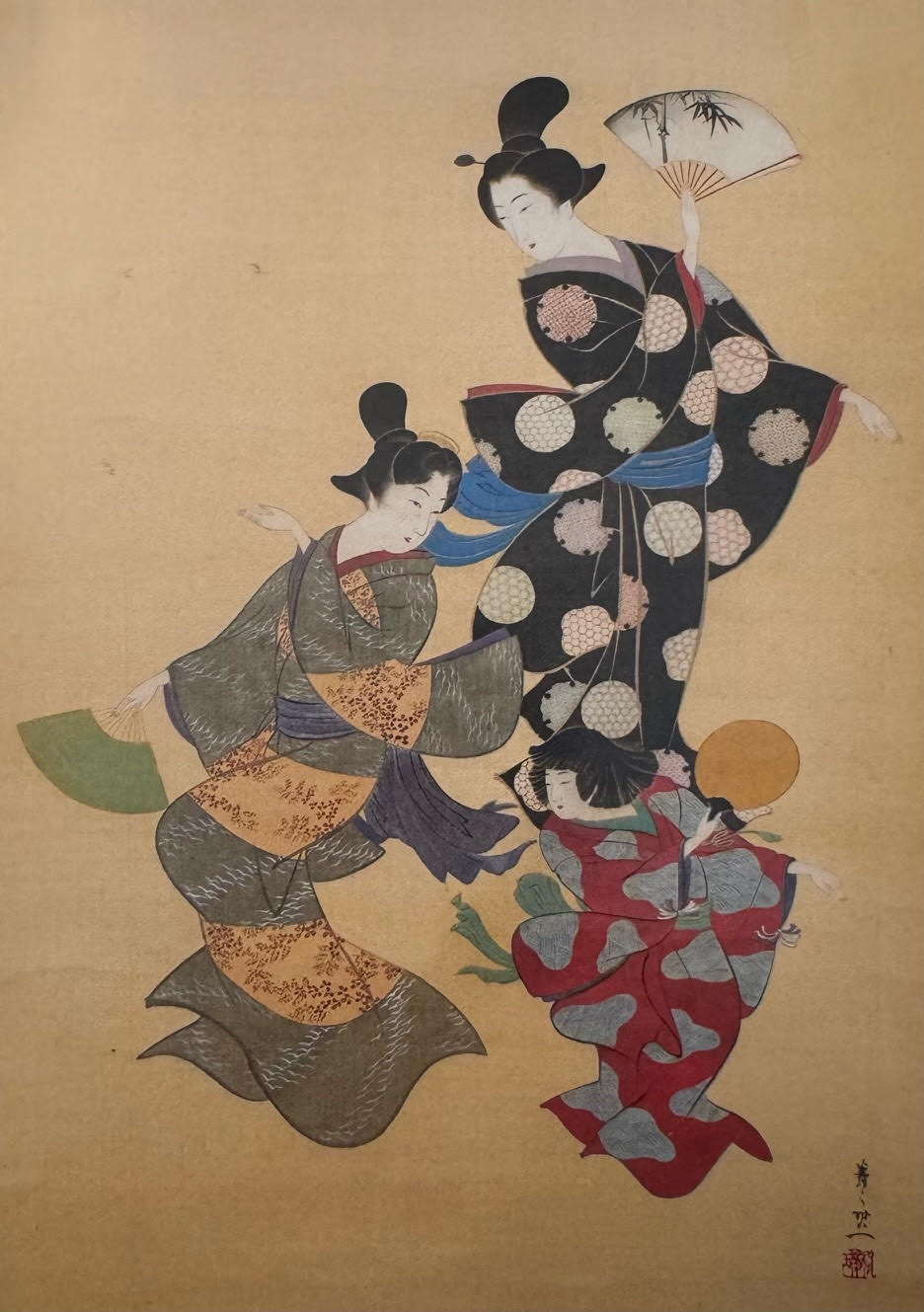
JAPANESE ART FROM THE GUIGNARD KYOTO COLLECTION IN PRIVATE COLLECTIONS
Scroll paintings and other Japanese works of art from the GUIGNARD KYOTO COLLECTION are already in many private collections in Europe. One of the richest is the collection of Prof. Dr. Walter Gebhard from Bayreuth, who died five years ago. This collector bought several scroll paintings from GUIGNARD over many years. After his death, the renowned "Museum für Kunst und Gewerbe" in Hamburg, which has owned the most important collection of Japanese art in Europe for over 100 years, acquired the entire art collection of around 500 objects. From October 10, 2023 to April 28, 2024, selected pictures from this collection were shown in the museum - two pictures from the GUIGNARD KYOTO COLLECTION were included by the museum in this selection: the
Dancers by Suzuki Kiitsu and the cormorant by Kishi Koma - the image of the dancers even decorated the representative poster of the entire exhibition.
Highlights
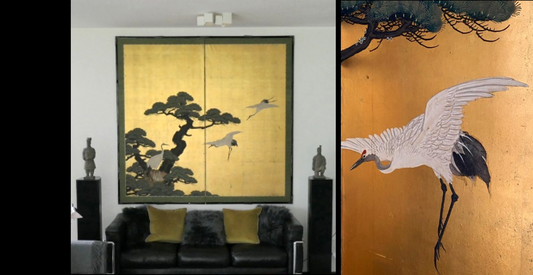
Cranes and Pines | anonymous (style: Kanō schoo...
Unlike scroll paintings, folding screens always had a purely decorative function in the first instance; they served as room dividers or as a background for the presentation of a person...
Cranes and Pines | anonymous (style: Kanō schoo...
Unlike scroll paintings, folding screens always had a purely decorative function in the first instance; they served as room dividers or as a background for the presentation of a person...
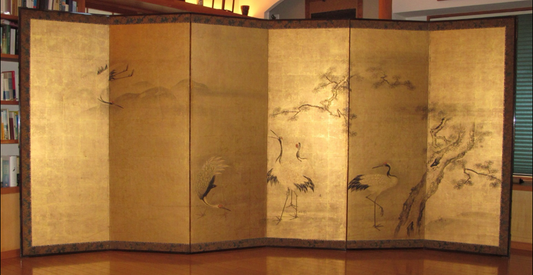
Cranes, Pines | anonymous | 18th century
Cranes and pines are symbols of good luck – the crane (often combined with the turtle) is a symbol of long life. The evergreen gnarled pine is a symbol of...
Cranes, Pines | anonymous | 18th century
Cranes and pines are symbols of good luck – the crane (often combined with the turtle) is a symbol of long life. The evergreen gnarled pine is a symbol of...
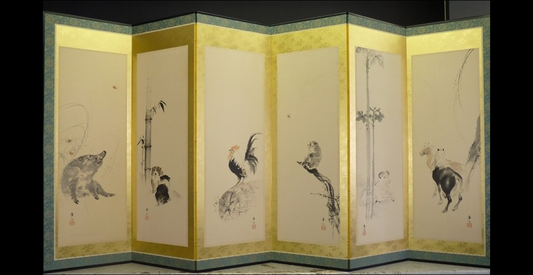
Twelve signs of the zodiac | Suzuki Kason 鈴木華邨 ...
Suzuki Kason is an outstanding painter of the Meiji period (1868-1912). He is not considered one of the "avant-gardists" of this radical period in Japanese art history, but rather an...
Twelve signs of the zodiac | Suzuki Kason 鈴木華邨 ...
Suzuki Kason is an outstanding painter of the Meiji period (1868-1912). He is not considered one of the "avant-gardists" of this radical period in Japanese art history, but rather an...
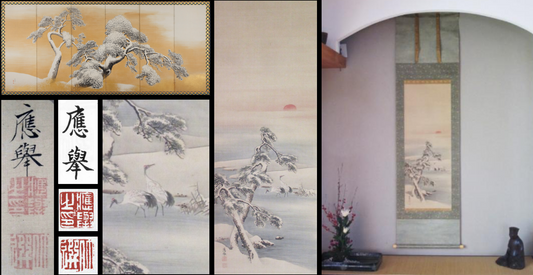
Two snow pines with two cranes | Maruyama Ōkyō ...
Maruyama Ōkyō is the most influential painter of the 18th century: he was the most sought-after artist of his time (large works by him are still extremely expensive today), he...
Two snow pines with two cranes | Maruyama Ōkyō ...
Maruyama Ōkyō is the most influential painter of the 18th century: he was the most sought-after artist of his time (large works by him are still extremely expensive today), he...

Calligraphy “The Big Cloud” 一帯雲 | (Ōbaku) Kōs...
The Ōbaku monks came from China; they fled in the middle of the 17th century from the repression that came with the change from the Ming to the Ching period...
Calligraphy “The Big Cloud” 一帯雲 | (Ōbaku) Kōs...
The Ōbaku monks came from China; they fled in the middle of the 17th century from the repression that came with the change from the Ming to the Ching period...
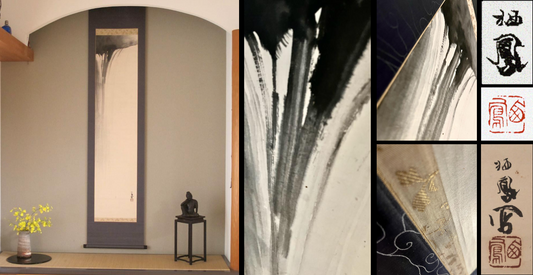
Waterfall | Takeuchi Seihō 竹内栖鳳 | 1864-1942
Takeuchi Seihō is one of the most outstanding nihonga painters. Nihonga is a style that emerged at the end of the 19th century. Directly translated, the term actually just means...
Waterfall | Takeuchi Seihō 竹内栖鳳 | 1864-1942
Takeuchi Seihō is one of the most outstanding nihonga painters. Nihonga is a style that emerged at the end of the 19th century. Directly translated, the term actually just means...
